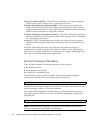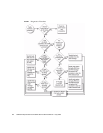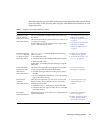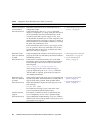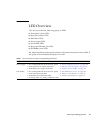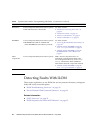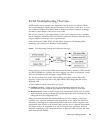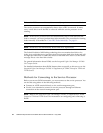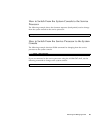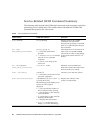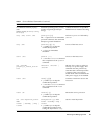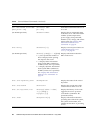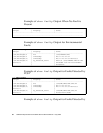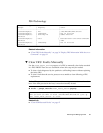
24 SPARC Enterprise T5140 and T5240 Servers Service Manual • July 2009
Note – No ILOM command is needed to manually repair an environmental fault.
The service processor can automatically detect when a FRU is removed. In many
cases, it does this even if the FRU is removed while the service processor is not
running.
Note – If the service processor does not automatically clear a fault state after the
fault is corrected, you must perform these tasks manually. The procedure for clearing
faults manually is described in “Clear FRU Faults Manually” on page 31.
Note – ILOM does not automatically detect hard drive replacement.
The Solaris Predictive Self-Healing technology does not monitor hard drives for
faults. As a result, the service processor does not recognize hard drive faults and will
not light the fault LEDs on either the chassis or the hard drive itself. Use the Solaris
message files to view hard drive faults.
For general information about ILOM, see the Integrated Lights Out Manager (ILOM)
3.0 Concepts Guide.
For detailed information about ILOM features that are specific to this server, see the
Integrated Lights Out Manager (ILOM) 3.0 Supplement for SPARC Enterprise T5140 and
T5240 Servers.
Methods for Connecting to the Service Processor
Before you can run ILOM commands, you must connect to the service processor. You
can do this using either of the following methods:
■ Connect an ASCII terminal directly to the serial management port.
■ Use the ssh command to connect to service processor through an Ethernet
connection on the network management port.
Note – Refer to the Integrated Lights Out Manager (ILOM) 3.0 Supplement for SPARC
Enterprise T5140 and T5240 Servers for instructions on configuring and connecting to
ILOM.



